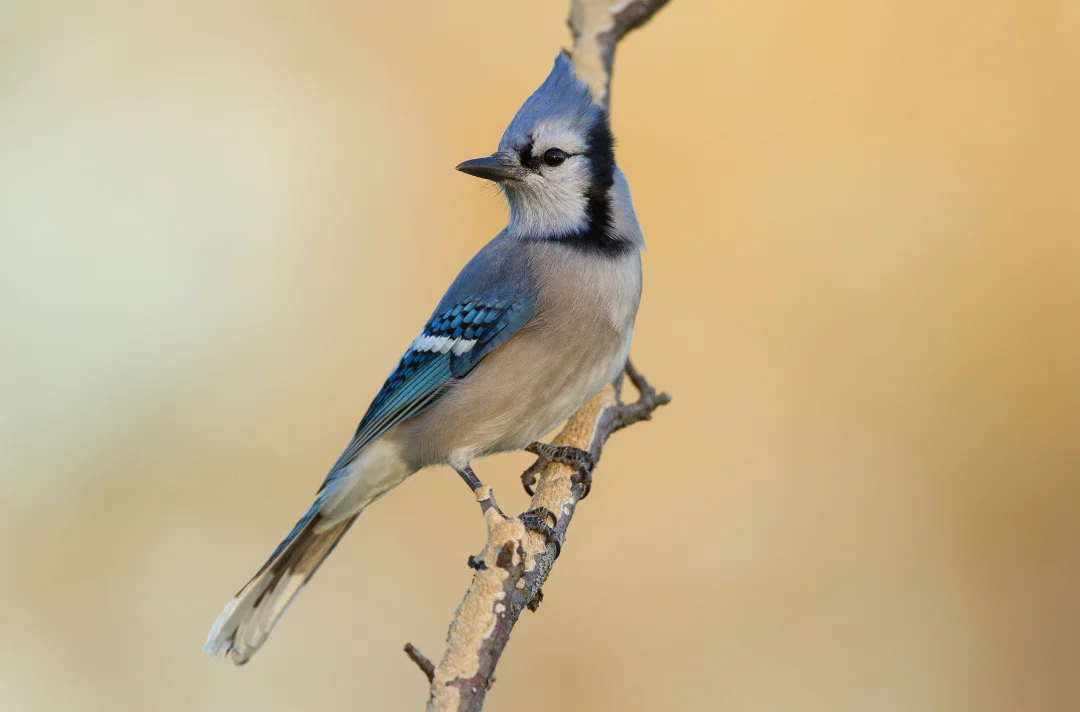If you live in Canada or the United States, chances are you’ve come across today’s Wildlife Spotlight. Blue jays are probably one of the most recognizable birds in North America. They live year round throughout much of the region and do well in places where people live. Furthermore, they are loud, boisterous, social, and brightly colored. So they’re hard to miss!
But like other common things in nature, we often overlook a lot. There is always more to the story than we initially assume. In this post, let’s get to know blue jays and learn some wild facts that may surprise you.
1. They are closely related to crows and ravens
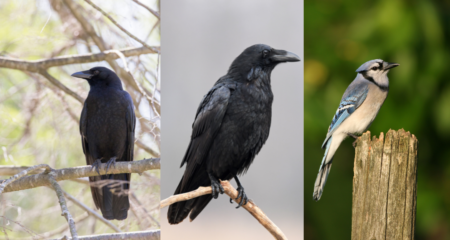
Although it may be hard to imagine by looking at them, blue jays actually belong to the same family as crows, rooks, and ravens. Although their goth, spooky counterparts are far bigger, all of them belong to the family Corvidae. Taking a scientific perspective, they have many more things in common than you might initially imagine. For instance:
- They’re all highly intelligent animals
- All have complex social lives
- They eat a variety of foods
- They have loud, raucous calls and are excellent at mimicking other sounds
2. Blue jays really like acorns
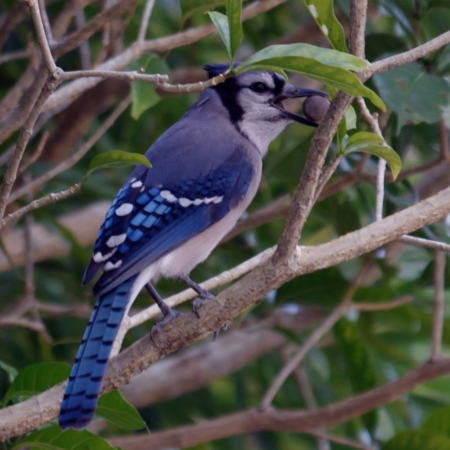
Although they eat a wide variety of foods, these birds are not without their preferences. Many species of jays are strongly associated with oaks and other trees that produce large nuts. Blue jays are no exception to this. You’ll find them much more often in areas with healthy oak populations. In fact, their distribution across North America is pretty tightly linked to the availability of oaks and their acorns.
Why do jays like acorns so much? In many ways, they’re a superfood! Acorns are rich and fats and proteins, which can be hard to find in nature. They can also stay preserved a long time, meaning that the jays can set them aside for later. Because blue jays live more or less year round in one spot and don’t migrate much, this is especially important.
When acorn supplies are high, blue jays will hide and bury (or cache) them around their territories to save them for later. According to one study, one jay can hide between 500-1000 acorns this way in a single Fall!
3. Jays are expert foresters

With all of their collecting and burying of acorns, jays end up behaving a lot like Johnny Appleseed. When choosing acorns for caching, they pick out the best ones with a discerning eye. Being very intelligent, they can tell good acorns from bad ones. In fact, they can figure out whether a nut has been attacked by acorn weevils (Curculio glandium) and will leave those acorns alone!
Of course, these birds bury acorns so that they can eat them later. However, they might not come back for them for several reasons. For example, they might have forgotten where they hid an acorn, or had enough food over the winter so they didn’t need it. The result? Blue jays are effectively planting trees!
In fact, by burying acorns underneath debris and soil, blue jays may help them germinate and have a better chance at life than other acorns. Since acorns can’t travel far on their own, jays act as a dispersal mechanism, helping them get to new habitats. Scientists believe that we can credit blue jays with helping oaks and other large nut-producing trees recover their populations as glaciers receded from North America about 15,000 years ago.
Talk about forestry!
4. They can flawlessly imitate hawks

Although jays don’t exactly put the “song” in “songbird”, they have a pretty impressive vocal repertoire. They communicate with one another using a wide variety of interesting vocalizations. Interestingly, these often include sounds that raptors and other predatory birds make. People have heard blue jays mimic birds like:
- Eastern screech owls (Megascops asio)
- Red-tailed hawks (Buteo jamaicensis)
- Red-shouldered hawks (Buteo lineatus)
- Cooper’s hawks (Accipiter cooperii)
- American kestrels (Falco sparverius)
In my own experience, these imitations are good enough to fool birdsong recognition apps like Merlin. However, scientists are still on the fence as to why blue jays exhibit this behavior. On one hand, they may imitate raptors to communicate to other jays that a predator may be around. Alternatively, they may do it to scare other birds away from a desired food source.
There is reason to believe that both of these may be true. Next time you hear a hawk calling and don’t see one, keep an eye out: you may be getting tricked!
5. They use their crests for communication
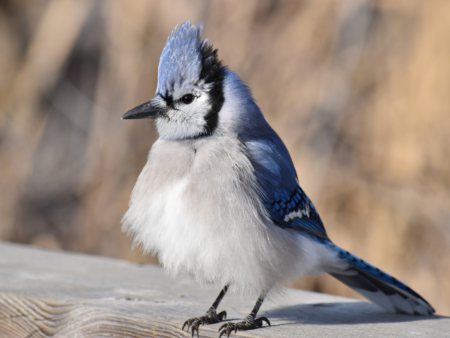
One of blue jays’ key field marks is the prominent crest of blue feathers on the top of their head. This gives them a diagnostic profile and exaggerates their spunky attitude. As it turns out, they use their crests much like people use their eyebrows, or dogs use their tails. That is, they are part of their communication.
Behavioral ecologists tell us that blue jays use their crests to communicate their levels of aggression and arousal in social situations. As very social birds, the ability to communicate their feelings and intentions is very important. The same goes for us!
In observational field studies, jays raised their crests more often when alarmed or having aggressive interactions with other birds. Their crests were down when they were taking care of chicks, interacting with family members, or spending time with their mate. Thus, the higher the crest, the greater the level of aggression.
6. They are really into “anting”

Have you ever heard of anting? While this weird phenomenon requires its own post, it’s worth mentioning here. Anting is when a bird intentionally exposes itself to a nest of ants. Often, the bird will take an ant in its bill and rub it on its feathers as if grooming itself. Additionally, the bird lays itself down in an area with a lot of ants so that they will crawl over it.
Blue jays are well known for this behavior. If you ever see one with its wings spread and tail bent under its legs on the ground, that may be what it’s doing!
Scientists have also been baffled by this behavior through the years. A study in 2008 showed that blue jays don’t rub ants on their feathers if the acid from their stingers is removed. That would imply that the formic acid in ant stings is important; either the jays are removing it to eat the ant, or using it to combat pests on their feathers. Since blue jays often eat the ants they rub on their feathers, it may be a form of food preparation. After all, ants can be a very nutritious meal!
7. Blue jays aren’t technically blue
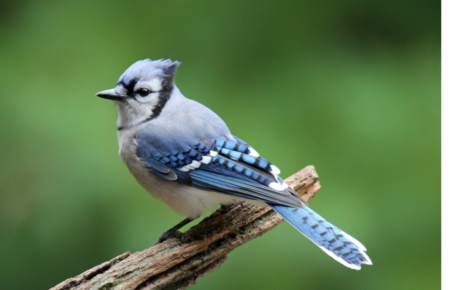
This one is a bit of a mind-bender. While it is absolutely true that blue jays will appear blue to our eyes, this isn’t technically because of a pigment. Unlike other natural colors the green used for photosynthesis or brilliant fall colors, blue-jay-blue doesn’t come from pigment. Instead, this blue comes from microscopic structures that scatter light and make it come across to our eyes as blue. Bill and Bob at the Nature Guys Podcast did a great episode on this, check it out below:
8. They have neat cousins all over the world
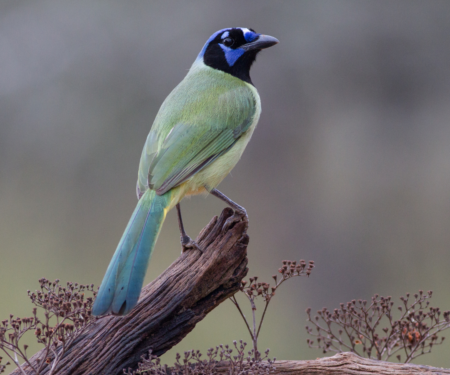
Did you know that there are lots of other kinds of jays in the world? Depending on where you end up, you might find:
- Green jays (Cyanocorax yncas)
- Gray jays (now more often known as Canada jays; Perisoreus canadensis)
- European jays (Garrulus glandarius)
- Siberian jays (Perisoreus infaustus)
- Brown jays (Psilorhinus morio)
- Azure jays (Cyanocorax caeruleus)
- Scrub jays (genus Aphelocoma)
- Steller’s jays (Cyanocitta stelleri)
Most of these share many common jay characteristics and are equally entertaining to watch. Next time you travel, keep an eye out for any of these neat blue jay relatives!
9. Blue jays are excellent naturalists
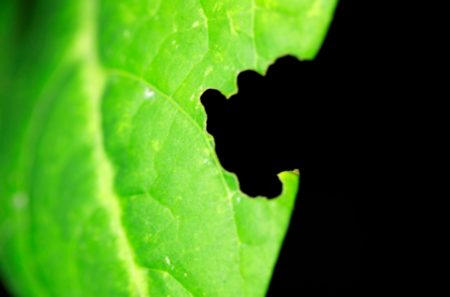
As I’ve mentioned before, it can be really hard to find food in nature. This is true even for omnivores and opportunists like blue jays which take what they can get. During the spring and summer, caterpillars are a hugely nutritious food source as they chow down on tree leaves. Of course, lots of predatory animals know this, so caterpillars have many ways of defending themselves.
One of these ways is by crypsis. This is a fancy scientific name for “being hard to see”. In other words, caterpillars try to hide their presence so predators don’t find them. One way that they do this is by hiding close to stems on the plants they eat during the day. Then, they come out at night to eat.
However, they do leave signs behind that can betray their presence. For example, obvious damage on the leaves of plants that they are eating. Fascinatingly, researchers observed that blue jays and other birds can cue in on this leaf damage while hunting for caterpillars. Just like an experienced naturalist, they notice these signs first and then find the culprits for a nutritious snack.
10. They can use tools
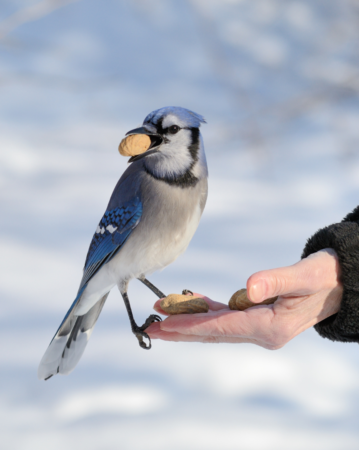
Since blue jays belong are corvids, belonging to one of the brainiest families of birds, we can expect them to be clever. Fascinatingly, this may even go as far as their using tools! Although it has never been documented in wild jays, domesticated jays may readily use tools. This is typically considered a hallmark of very high intelligence among animals. In fact, it was once considered a primary factor distinguishing people from other animals!
As we now know, a broad range of other animals can do it. And apparently, these beautiful blue loud-mouths can too!
Thanks for reading wild facts about blue jays!
Have you had a cool, recent experience with blue jays? Let us know in the comments! If you have questions or other requests for Wildlife Spotlight posts, shoot me a message using the Contact page.

